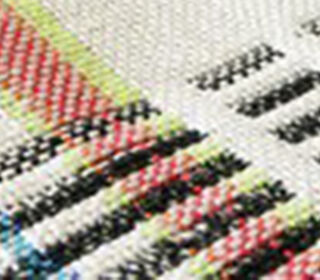
Blog

It’s that time of year…
We’re currently in the middle of the most daunting part of our degree…
F I N A L
M A J O R
P R O J E C T!
Most of us feel daunted because for the first time in our course – BA (Hons) Textile Design – we have TOTAL autonomy. While this is an exciting prospect, it’s also nerve-wracking as we’re used to having briefs and some direction to follow…so now we’re entering uncharted waters!
Ordinarily this alone is a big challenge to take on, but I decided to take an even more challenging road…
There are a few different stages to working on your final major project (FMP!) and the first is research. This is where I took an unpredictable route with my project.
Usually most students use the in-depth and theoretically informed research we conducted during our research dissertation module as a foundation to inform their FMP. My research dissertation was on surrealism in Fashion (my background is Fine Art) and initially I too thought I’d take this theme through to my FMP.
However I wanted to pursue a different route by researching another theme I have a personal interest in…the new era of news consumption, modern journalism and specifically the rife influx of ‘fake news’ features.
And so my FMP began…
Stage 1: Research and Creative Outlet
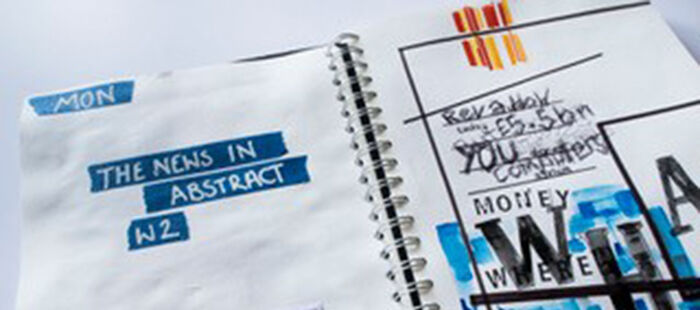 With my new theme as a starting point I began the research phase of my project.
With my new theme as a starting point I began the research phase of my project.
I knew I wanted to explore the fragile relationship between modern journalism and its audience, how it’s built on attention-grabbing ‘clickbait’ headlines and instant social media updates.
Also how this shallow digestion of news can lead to miscommunication and distortion in factual information and stories.
So I began to explore the theme in detail…
Research often involves gallery visits, taking primary images and visiting places relevant to your topic of interest.
Naturally I looked to investigate modern media. I got the newspaper each day and looked at what was presented in the news, particularly exploring examples of ‘fake news’ which is breeding increased mistrust in news consumers, leading to the fragile relationship we feel with the media today.
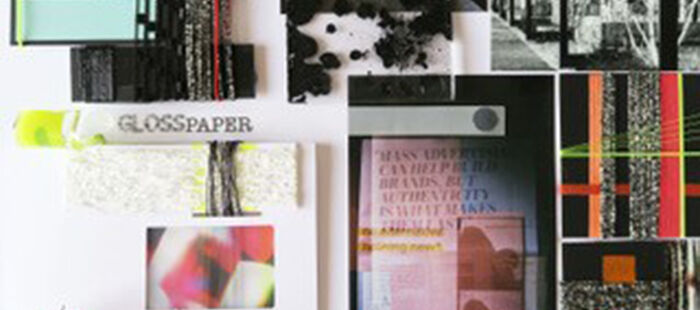 I started to theme each week’s news and from these examples I began to put a diary together.
I started to theme each week’s news and from these examples I began to put a diary together.
I used the diary as my creative outlet, producing loose drawings of my personal response to the research and visual representations of my thoughts. I added primary images to juxtapose the distortion of ‘fake news’ and highlight the mistrust. I also explored the contrast between film and digital photography as part of the experimentation in my inspiration-gathering, as well as investigating the markings for testing ink print quality on newspapers and TV test cards, which look superficially to test the quality of news rather than the actual content of it.
This stage of the FMP is extremely varied across the course depending on which area of Textiles we’ve each decided to specialise in. For example, the students that have specialised in print will be doing a lot of drawing during this phase of the project, no doubt filling multiple sketchbooks.
During year one we got to explore the different specialisms within the industry, such as print, embroidery and constructed textiles. This helped us to decide which area we were interested in pursuing the most.
At the beginning of the course, I always thought I’d specialise in print, however once I really explored each specialism in first year I surprised myself by preferring constructed textiles (weave and knit). I just really liked the materiality of it and seeing the final pieces.
This brings me to the current stage of my project…
Stage 2: Sampling
So I had my research and diary full of themed examples and loose drawings – the next stage was to translate them into actual sample pieces.
My research inspired me to respond to my chosen theme by producing a series of woven fabrics to encapsulate the, at times, erratic and manipulated new era of news consumption.
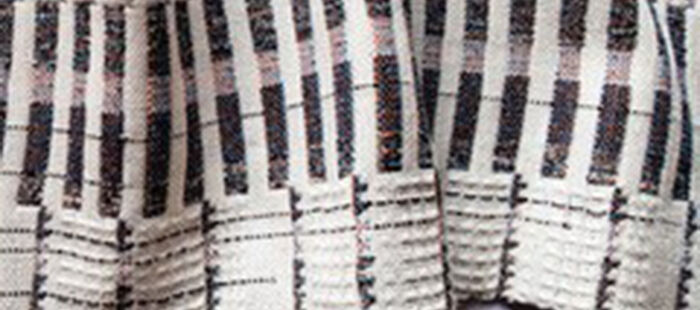 I’m now in the process of producing my initial set of experimental samples.
I’m now in the process of producing my initial set of experimental samples.
Weave takes a lot of technical knowledge and planning, which often means each piece can take longer than pieces from other specialisms such as print. So whereas print students might be building up much higher volumes for their sampling phase, I’m aiming to produce around 20 experimental samples, which I can then shortlist from for the next phase of the project (final sampling).
Each weave can take days to produce, for example it can take two-three days just to put the warp on the loom.
One of the best things about it though is that I’m already noticing how my skills are really improving during my FMP. I can definitely put the warp on the loom a lot quicker than back in my first year.
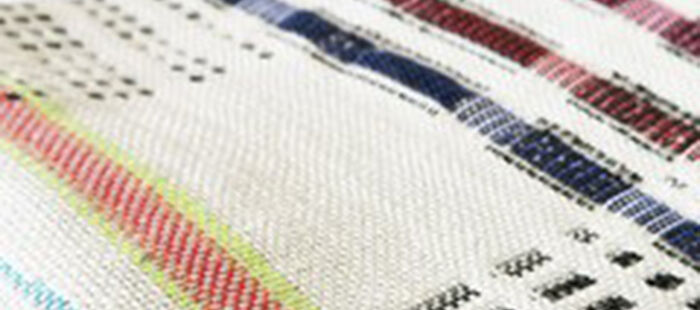 Then I do the design for the weave, which takes a lot of consideration. I spend time focussing on which yarn to use and thinking about the properties of the fibre, then draw to suit that particular fibre. For example, I use oil pastels or coloured pencil for fluffier yarns and biro for shinier, stand out lines.
Then I do the design for the weave, which takes a lot of consideration. I spend time focussing on which yarn to use and thinking about the properties of the fibre, then draw to suit that particular fibre. For example, I use oil pastels or coloured pencil for fluffier yarns and biro for shinier, stand out lines.
The autonomy and free nature of the FMP module means I’m really getting to experiment on the loom, increasing my confidence in using it and even discovering things by accident as I go. It’s great having technicians on hand in the workshop each day too – they’re really knowledgeable when we need extra advice and support.
Stage 3: Final Sampling
The next stage I’ll go into is final sampling, which is really exciting. This is where I’ll pick and choose from my initial samples to decide which pieces I’ll be carrying through to hand-in as part of my final series. Hand-in is just three weeks away!
Stage 4: Presenting
The final stage is presenting – possibly the most nerve-wracking stage, but hopefully the most rewarding too!
This is where we each display our FMP for the end of year graduate show.
It’s such an important stage as it forms part of the assessment process by our tutors. They’ll be marking us on everything, from what we choose to hang the samples on, to what angles we display them at, to how many samples we choose to feature!
And…to add to the build-up, they’ll also be looking at our presentations to select which students will have the opportunity to represent the University at the New Designers exhibition (there are 15 places up for grabs in total)!
What I’ve learned
At this stage in the project, if I could give future third year students three pieces of advice for their FMP it would be:
-
Stay curious, continually seek out inspiration. It’s not always in the most obvious of places.
-
Be aware of which creative process works for you best, it can help to keep you inspired.
-
Continue to experiment throughout each module with materials/processes/techniques. Often the most exciting pieces are unexpected!




